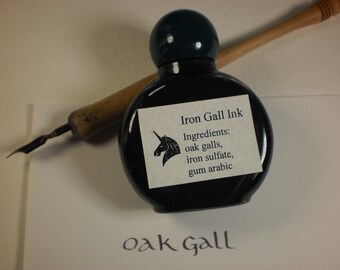Ink-Making Equipment
 |
| Some of the basics. |
First - DON'T cross the streams! This is a good safety tip. Keep your ink-making equipment separate from your cooking equipment. They may look the same, but get some cheap gear & keep it just for making ink. You don't want to prepare food with any of this stuff after it's been in ink. That bowl in the upper right? It has a permanent black/brown stain which would absolutely contaminate your food.
That said, cheap is good! If you can't find a sauce pan or large metal bowl at the dollar store, use a large soup can or a #10 can of pudding (emptied & cleaned, mmm pudding). Not all ink recipes call for heating the ink, but a metal container can go on the stove if necessary. Hmm, hot pads would also be good. You will probably need two large-ish containers. One for the un-strained ink and one to strain the filtered ink into. It's a real nuisance to try to strain anything while you're pouring it into tiny ink bottles. You'll also need some kind of spoon to stir things, a strainer to remove the big lumps, coffee filters to remove the little lumps, tiny little bottles to store your finished ink (with water-tight caps), a funnel to get the ink into the tiny little bottles, and probably a hammer (not shown.) The hammer is for smashing up the oak galls. By the way, you can get tiny funnels like this one in the sporting goods section. They're used to fill camp stoves that use white gas instead of propane tanks. Again, don't use the funnel for anything besides ink - not sure what it would do to your camp stove to get ink in your fuel.
****
A good tip from Hroswitha von Lippe, "Remember spills can be permanent." (Good idea to cover surfaces with plenty of newspaper or paper towels just in case!)
Another from Ian the Green, "I recommend linen for filtering. It goes much faster. I also believe it does a better job in my opinion than the coffee filters." (Coffee filters do take a long time. I'll see if I have any linen to use this time around.)
****
I hope you had a chance to follow links from my last blog & read through some of the recipes. I will probably be using one of the simpler recipes this time. One that doesn't involve cooking the ink, additional ingredients, or letting the galls sit long enough to ferment.
***
I've posted another link to a book absolutely bursting with ink information. You'll have to contact them by email or phone (listed on the web site) rather than purchasing online, but it's well worth it at $8.95. "Manuscript Inks" by Jack C. Thompson, available from Caber Press:
http://home.teleport.com/~tcl/mi.htm










